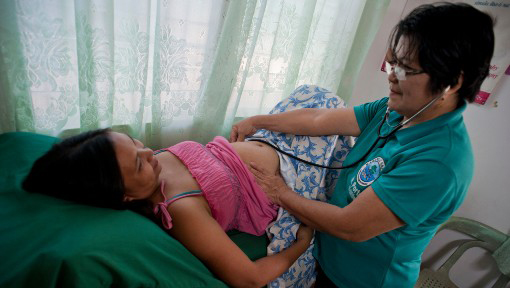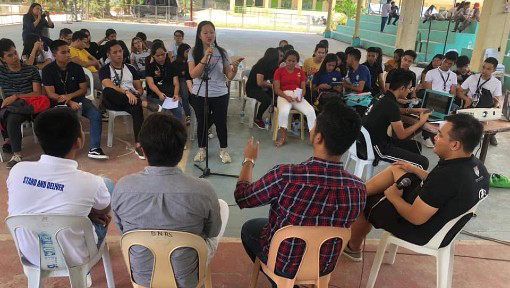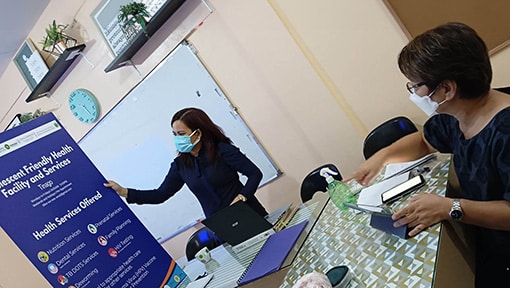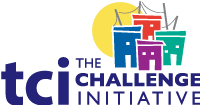Philippines Toolkit: Demand Generation
- Home
- Help and Support
- Close
- Toolkits
- Global Toolkit
- AYSRH Toolkit
- Hub Toolkits
- Core High-Impact Practices
- Gender Essentials Mini Course
- Close
- Resource Collection
- Community of Practice
- Coaching
- Log In/Register
- My Profile
- English
Community Health Volunteers
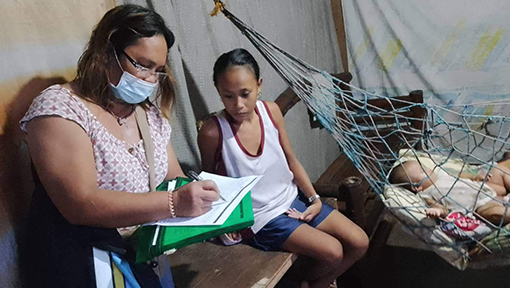
Community Health Volunteers (CHVs) are important partners in promoting and providing Family Planning (FP) and Adolescent Sexual and Reproductive Health (ASRH) services. Serving as health promotion officers within their respective barangays, they are at the forefront of the nation’s primary healthcare system. Although their official designations may vary depending on the city or municipality, such as Barangay Health Workers (BHWs), Barangay Service Point Officers (BSPOs), or Barangay Population Officers (BPOs), they all fulfill similar roles. According to the Department of Health (DOH), Barangay Health Workers (BHWs) are defined as:
In this specific approach, the general term CHV will be utilized. When CHVs are trained and provided with the necessary tools and resources, they can effectively address gaps in both demand generation and service delivery. CHVs are tasked with providing various services to specific communities, including health education, referrals, follow-ups, population profiling, and basic preventive healthcare through home visits.
What are the benefits?
CHVs have been proven to enhance health outcomes by overcoming geographic access barriers resulting from shortages of health workers. They achieve this by minimizing financial burdens on clients through reduced travel requirements, addressing social barriers, and extending services to women across various social norms (CHWs HIP).
CHVs as a High-Impact Practice (HIP) for Universal Health Care (UHC)
The CHV HIP approach aims to bolster the LGU’s Reproductive Health and FP program by deploying dedicated and trained CHVs. These CHVs play a crucial role in increasing contraception usage, especially in areas with high unmet needs, low access, or various geographic and social barriers. They achieve this by conducting house-to-house visits within their designated communities and providing direct health promotion.
As essential connectors between the community and health services, fully-trained and empowered BHWs serve several key functions:
- Enhance access to and demand for contraceptive services.
- Serve as credible and trusted sources of health information, improving clients’ attitudes toward FP.
- Provide quality healthcare services to youth and women of reproductive age, offering information on where to access FP methods and facilitating referrals to services.
- Act as the primary points of contact for teenage mothers and fathers seeking community AYSRH services, particularly in remote areas.
- Facilitate referrals to health facilities, ensure follow-up care, and conduct home visits as needed.
How to Implement
Step 1: Map out on AYSRH/FP services
- Coordinate with the City Health Office (CHO) to determine the employment and training status of CHVs. Map out the number of BHWs assigned per Service Delivery Point (SDP).
- Identify the training status of CHVs. According to the BHW Benefits and Incentives Act, CHVs are required to undergo training by either the Department of Health (DOH) or the LGU CHO to be accredited as BHWs.
- Conduct a training needs analysis for CHVs to assess their level of knowledge and skills in providing health services, their attitudes toward adolescent clients, and the degree of ownership they feel for their community.
Step 2: Capacitate and provide CHVs with adequate equipment and supplies
- Provide comprehensive training for CHVs as health promotion officers. This includes the following mandatory training programs for accreditation:
- DOH BHW Formal Course: A training program designed to impart the basic knowledge and skills necessary for CHVs to fulfill their duties.
- TESDA Barangay Health Services NC II: A certificate course that serves as an alternative for formal training and accreditation.
- Offer specialized training for CHVs focusing on FP and AYSRH, including:
- CHW Job Tasking: Enhances their skills in delivering FP services.
- Adolescent Health Education and Practical Training (ADEPT): Improves CHVs’ ability to communicate with adolescents and conduct HEEADSSS training.
- Sexually Healthy and Personally Empowered-Adolescent (SHAPE-A): Enhances CHVs’ communication skills with adolescents and promotes non-judgmental conversations.
- Provide training to CHVs on the utilization of community tracking tools, such as the Target Client List, to monitor the uptake of AYSRH and FP services among teenage mothers, fathers, and women of reproductive age. Ensure that data collected from the Target Client List is reported and analyzed at the city level.
- Conduct orientation sessions for CHVs on the use of promotional materials that offer accurate information and entertainment, including flipcharts, videos, posters, pamphlets, etc. Prior to using these materials, ensure that CHVs are familiarized with the appropriate delivery of key messages. The iChoose: Malayo ako maging website is an excellent resource of professionally-vetted, publicly-available materials for Information, Education, and Communication (IEC) activities, as well as the Healthy Young Ones flipcharts.
Step 3: Offer Support and Motivation to CHVs
- Provide training to nurses and midwives assigned to oversee the BHWs on coaching techniques. These supervisors should conduct monthly performance review meetings with the CHVs to provide routine supportive supervision and monitor the quality of service provision.
- Establish a regular skills refresher course for CHVs. Utilize post-training examinations or return demonstrations to refresh the skills of CHVs. Recognize their improved competency by issuing certificates or providing promotional materials and supplies such as t-shirts, bags, caps, umbrellas, and other IEC materials. Additionally, conducting short refresher sessions during monthly meetings can enhance their confidence in the field.
Step 4: Monitor the work of CHVs
- Monitor the performance of CHVs annually. Conduct regular exams or return demonstrations along with coaching to ensure that CHVs maintain their skill level and commitment.
- Monitor the implementation of the program through a Quality Implementation Checklist for CHVs, to be conducted regularly.
Indicators for success
Vertical Indicators
- Inclusion of CHV into the Program Design
- Inclusion of CHV in the Work & Financial Plan, Annual Operational Plan, Annual Investment Plan
- Adoption of CHV standards as per DOH Barangay Health Workers’ Facilitator’s Manual
Horizontal Indicators
- # of CHVs trained/oriented on FP/AYSRH or with the BHW Formal Course Training
What’s the evidence that supports the strengthening of family planning through empowered CHVs?
According to Mallari E et al. 2020, many BHWs demonstrate a propensity for leadership roles. This is often attributed to their active involvement in their community and their deep understanding of local issues, stemming from personal connections with higher-ranking officials. However, their dedication to their roles goes beyond financial compensation. Some BHWs are motivated by the opportunity to serve the public, gain recognition within their community, establish personal connections with a wide range of people, and uphold a sense of altruism.
TCI APP USERS PLEASE NOTE
You will only receive CERTIFICATES by email – when earning a score above 80% – and will not be able to view or print a certificate PDF from the TCI app.
Test Your Knowledge
Earn a Certificate
Quiz Summary
0 of 3 Questions completed
Questions:
Information
You have already completed the quiz before. Hence you can not start it again.
Quiz is loading…
You must sign in or sign up to start the quiz.
You must first complete the following:
Results
Results
0 of 3 Questions answered correctly
Time has elapsed
You have reached 0 of 0 point(s), (0)
Earned Point(s): 0 of 0, (0)
0 Essay(s) Pending (Possible Point(s): 0)
Categories
- Not categorized 0%
- 1
- 2
- 3
- Current
- Review
- Answered
- Correct
- Incorrect
-
Question 1 of 3
1. Question
BHWs undergo training from any accredited government or non-government organization.
CorrectIncorrect -
Question 2 of 3
2. Question
BHWs serve as a critical bridge from the community to services because they provide:
CorrectIncorrect -
Question 3 of 3
3. Question
BHWs do not monitor the health status of household members in their service area, including noting when the household includes teenage mothers.
CorrectIncorrect
Demand Generation Approaches
Challenges
- Different LGUs may have varying policies governing the employment and training of CHVs. In areas where CHVs are hired by and report directly to Barangays rather than the CHO, discrepancies in the provision of quality service have been observed. However, with the implementation of the Responsible Parenthood and Reproductive Health (RPRH) Law and the BHW Law, CHOs now have legal frameworks to support their policies for training CHVs. CHOs should leverage these policies to ensure that all CHVs, regardless of their employment status, receive the necessary training.
- Following elections, there is often a turnover of CHVs, leading to a need for additional capacity building and resulting in delays in service provision and reporting. As the primary entity responsible for training CHVs, CHOs should establish a regular onboarding process for new CHVs. Additionally, CHOs can implement performance monitoring for CHVs to justify their employment and minimize turnover rates.
External Resources
- Department of Health. DOH Academy. Adolescent Health Education and Practical Training HSD-PCS-IBS-ADOLESCENT-ADEPT (doh.gov.ph)
- Commission on Population and Development. Sexually Healthy and Personally Empowered Adolescent module
- I CHOOSE #MalayaAkongMaging USAID, Johns Hopkins Center for Communications Program, Department of Health, Commission on Population and Development, Ugat ng Kalusugan. (2023)
- Connecting communities to primary care: a qualitative study on the roles, motivations and lived experiences of community health workers in the Philippines. Mallari, E., Lasco, G., Sayman, D.J. et al. 2020
- High-Impact Family Planning Practices: Community Health Workers


